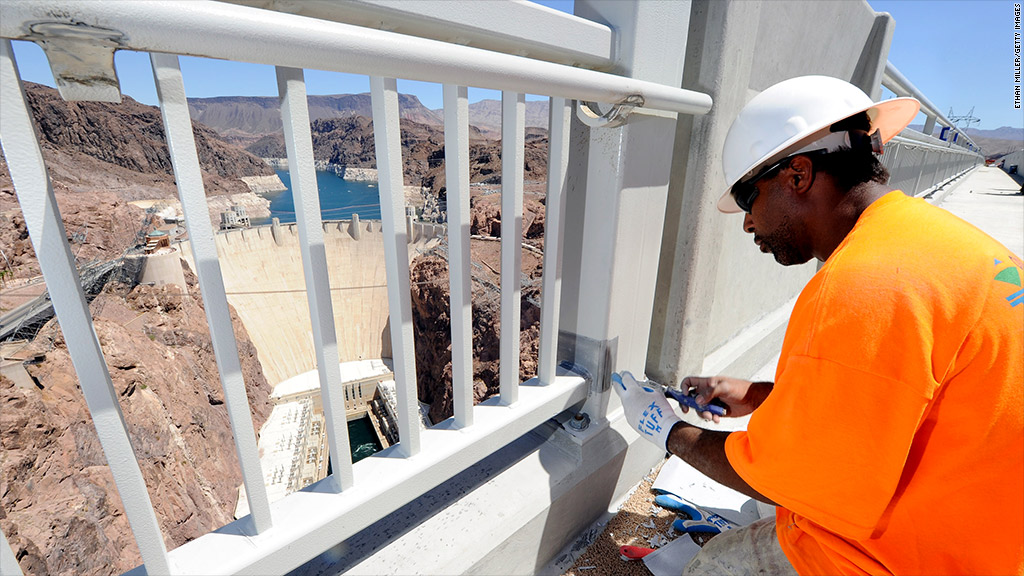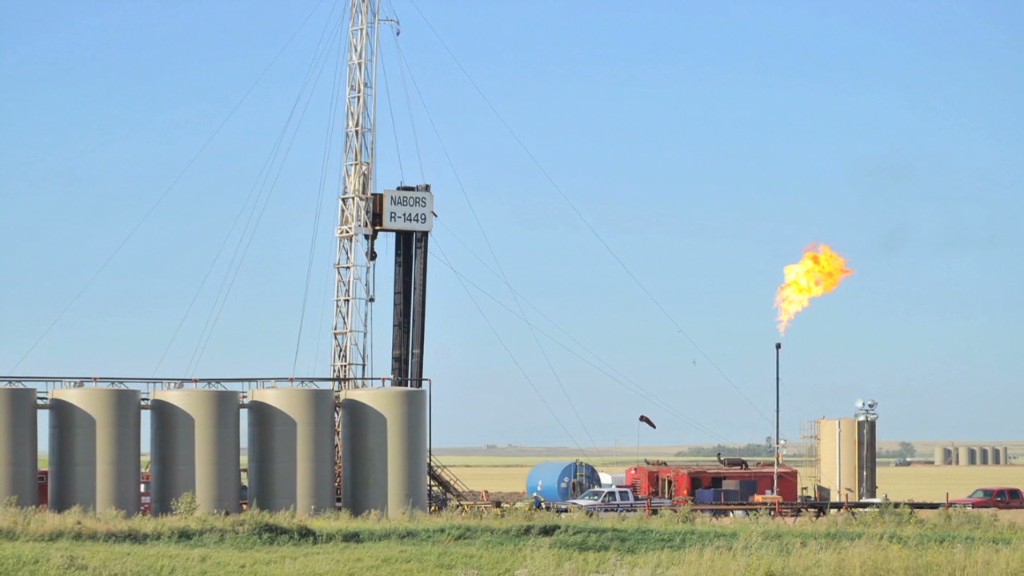
Over the past few years there's been a lot of talk about green jobs. But one renewable sector scantly mentioned actually supports more jobs than wind or solar combined: Hydro.
Between 200,000 and 300,000 people currently work in or around hydroelectric dams across the United States, according to the National Hydropower Association.
That's small compared to the 2.6 million the oil and gas industry claims it employs, but it's more than wind (80,000, according to the wind industry) and solar (120,000) put together. It's even more than the 206,000 the National Mining Association says work mining coal.
"There's a whole host of individuals involved, with lots of different employment opportunities," said Linda Church Ciocci, the National Hydropower Association's executive director.
What the jobs are: Most hydro dams in the United States have already been built, so these jobs aren't really in the construction or engineering of new facilities. Instead, they're concentrated in operations at existing dams.
Job functions include the engineers and operators who open and close the dams gates, send the power to the grid and otherwise run the place. They also include the mechanics, electricians and other maintenance professionals needed for upkeep on the increasingly aging facilities.
There's also a mini-industry built around the near-continuous permitting of these massive structures -- with their heavy environmental footprint and obvious need for safety. Engineers check structural integrity, while wildlife biologists and botanists monitor a dam's impact on the river and surrounding environment.
Building a dam itself results in the creation of a massive reservoir behind it -- a body of water that can then be used for recreation. Many dams hire park rangers and other personnel to work at these sites, said Ciocci.
Getting a job: Any math, science, engineering or technology majors can get a job as a hydro plant operator, said Alan Hardcastle, a senior research associate at Washington State University's Energy Program.
Some schools offer two-year degrees in power plant operations, which can act as a stepping stone to a full-fledged engineering degree and are often enough to get a job at a plant, said Hardcastle. The average pay is around $65,000 a year, he said.
Future growth: While dam workers tend to stay at their jobs for a long time, the industry is aging. Between 25% and 50% of dam workers are expected to retire in the next five years, said Ciocci.
Many of the job openings will be in the West -- Washington, Oregon and California are the top three states in terms of hydroelectric production. But New York, Tennessee and Alabama are also in the top 10.
Related: World's biggest energy projects
The industry also wants to expand. Hydro currently accounts for about 7% of the nation's electricity production, according to the Energy Information Administration. That's about twice as much as wind, and dwarfs solar's 0.1% share (coal, natural gas and nuclear account for the bulk.)
The hydro industry says it could fairly easily increase its output by 60%, if given the proper investment tax credits or mandates from the government. The industry would likely need this government support to grow significantly, as hydro has a high upfront cost and building a natural gas plant is relatively cheap. But hydro produces carbon-free power -- a goal for many states.

Much of the expansion could take place on dams already in place but lacking the ability to produce power. Only 3% of the country's 80,000 dams are wired to produce electricity, said Ciocci.
Environmentalists are lukewarm on the idea though.
The tax credits are better left for wind or solar, which tend to not alter the landscape as much, said Nathanael Greene, renewable policy director at the Natural Resources Defense Council. Electrifying some of the dams already built is an idea Greene could support however, if environmental sensitivities were taken into account.


